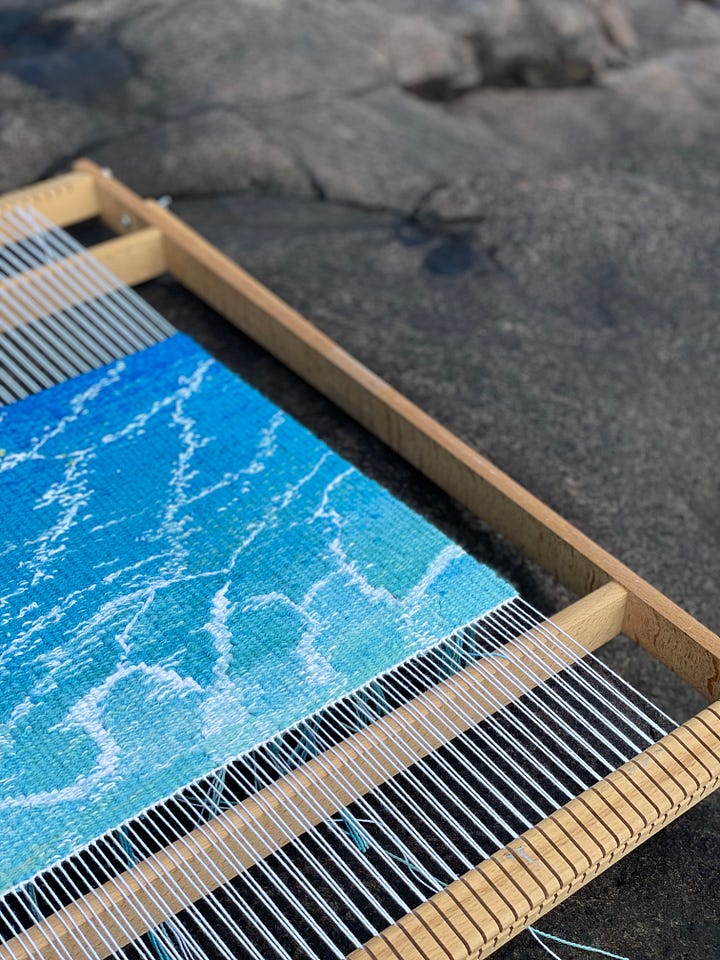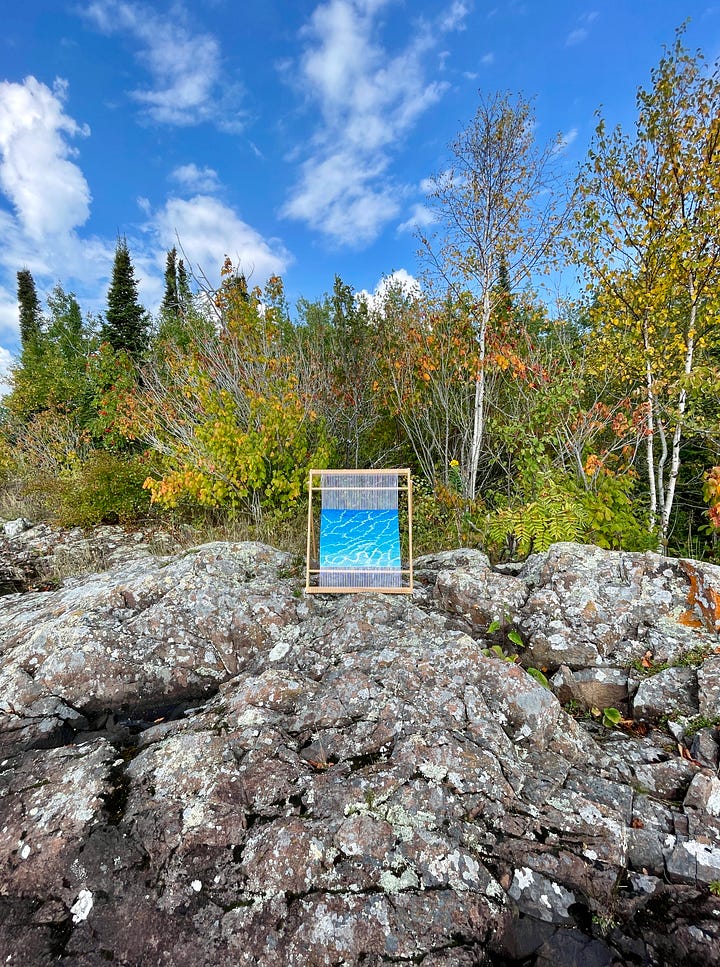When did making art become so scary?


Do you remember being young and making art just for the thrill of it? It was probably a mess. It wasn’t winning any awards. But you felt like you had made something truly beautiful and unique and that it was worth running to show your parent or sibling, worth gifting to your grandma.
As a kid, I used to write novel-length fiction books with complete faith in myself. I started the story without knowing where it would go, but I trusted my imagination would take me there. I have short stories and novels and poems from my childhood that are precocious and silly and—most importantly—written down because I had no inner critic telling me they were stupid, so why bother.
I wrote them without regard for whether they would be “good.” I wrote to see where the story would go.
It changes a lot as we grow, doesn’t it? That childlike confidence dissolves into a lonely paralysis at the blank page. We’ve had some rejections, some people who didn’t respect or care for or even notice our creativity. We’ve had a lot of false starts, a lot of unfinished drafts, a lot of languishing ideas that feel too momentous to even try to begin making reality. We become self-aware to the point of crippling our creativity because it’s never quite what we imagined it would be. As Stanley Kunitz said, “The poem in your head is always perfect. Resistance begins when you try to convert it to language.”
And so we convince ourselves it might be time to quit. We’re not “real” artists after all, just like we always knew deep inside.
I feel comfortable using “we” here and not just “I” because after reading Art and Fear: Observations on the Perils and Rewards of Artmaking1 by David Bayles and Ted Orland, I’m convinced these intrusive thoughts are fairly common within people who create.
Published in 1993, Art and Fear is a small book that succinctly puts words to my experience as an artist so far. It has one overarching (and unfortunate) message for artists: Making your art will always come with some fear and uncertainty: that’s just how it is. That’s how it will be. Therefore an essential part to making art is being able to hold all this doubt and uncertainty, and make it anyways.
No matter how much art you make, you’ll always see how it could be better. You’ll always feel like it didn’t come out as good as it was when you pictured it, and you might always feel like an imposter among “real” artists. Some will use this knowledge as a reason to give up, while others can use it as a tool to keep going.
What artists can find hope in is a) We’re not alone. And b) The only difference between a “real” artist and an aspiring/former artist is that the real artist makes their art. That’s it.
Sometimes, maybe often, it’ll be BAD art. That’s normal. Only by making the bad art do we eventually, with hard work and persistence, find our voices and maybe, just maybe, produce something extraordinary. As Art and Fear says, “The function of the overwhelming majority of your artwork is simply to teach you how to make the small fraction of your artwork that soars … even the failed pieces are essential.”
I’m sharing all my favorite quotes from Art and Fear below, but I highly recommend reading the whole book if the quotes resonate.
So courage, friends. “The world is not yet done.” Let’s stir those deep, sometimes frightening waters and co-create something beautiful together.
Uncertainty
“Making art means working in the face of uncertainty. It means living with doubt and contradiction, doing something no one much cares whether you do and for which there may be neither audience nor reward.”
“Art is like beginning a sentence before you know its ending. The risks are obvious: you may never get to the end of the sentence at all–or having gotten there, you may not have said anything.”
“Uncertainty is the essential, inevitable, and all-pervasive companion to your desire to make art. And tolerance for uncertainty is the prerequisite to succeeding.”
Intentions and Reality
“Making art provides uncomfortably accurate feedback about the gap that inevitably exists between what you intended to do, and what you did. In fact, if art making did not tell you (the maker) so enormously much about yourself, then making art that matters to you would be impossible. To all viewers but yourself, what matters is the product: the finished artwork. To you and you alone what matters is the process: the experience of shaping that artwork.”
“The function of the overwhelming majority of your artwork is simply to teach you how to make the small fraction of your artwork that soars … even the failed pieces are essential.”
“That moment of completion is also, inevitably, a moment of loss–the loss of all the other forms the imagined piece might have taken. The irony here is that the piece you make is always one step removed from what you imagined, or what else you can imagine, or what you’re right on the edge of being able to imagine.”
Identity
“Our flaws and weaknesses, while often obstacles to getting our work done, are a source of strength as well. Something about making art has to do with overcoming things, giving us a clear opportunity for doing things in ways we have always known we should do them.
“While you may feel like you’re pretending that you’re an artist, there’s no way to pretend that you’re making art. … You make good work by (among other things) making lots of work that isn’t very good, and gradually weeding out the parts that aren’t good, the parts that aren’t yours.”
“Imperfection is not only a common ingredient in art, but very likely an essential ingredient … for you, the seed for your next art work lies embedded in the imperfections of your current piece. Such imperfections are your guides–valuable, reliable, objective, non-judgemental guides–to matters you need to reconsider or develop further. It is precisely this interaction between the ideal and the real that locks your art into the real world and gives meaning to both.”
Fear and Courage
“Making art can feel dangerous and revealing. Making art IS dangerous and revealing. Making art precipitates self-doubt, stirring deep waters that lay between what you know you should be, and what you fear you might be. For many people, that alone is enough to prevent their ever getting started at all.”
“Art work is ordinary work, but it takes courage to embrace that work, and wisdom to mediate the interplay of art and fear … your art does not arrive miraculously from the darkness, but is made uneventfully in the light.”
“Answers are reassuring, but when you’re onto something really useful it will probably take the form of a question. Over the long run, the people with the interesting answers are those who ask the interesting questions.”
“And so you make your place in the world by making part of it—by contributing some new part to the set … each new piece of your art enlarges our reality. The world is not yet done.”
Tell me:
Which quote is your favorite/do you relate to the most?
Do you have a different experience of making art?
Credit to my neighbor, friend, and photographer Kim for introducing me to Art and Fear.
If you buy a book through my bookshop.org link, I may receive a small commission for my recommendation. Thank you for supporting my creative work!
If you like “Surface” the tapestry above, you can view it and my other artwork on my weaving website, www.northwoven.com/shop






I really resonate with this. My entire adult life I’ve made my living as an artist. But the kind where I produce someone else’s vision. It’s fun but not terribly risky or soul quenching. What I love is writing. Fiction writing. But learning how to do it without regular client check ins to make sure I’m on track, heading in the right direction? Agonizing. It’s like learning to walk for the first time when the world knows me as someone who’s been out there jogging for quite a while. But oh, the reality is soooo different. Thank you for sharing your experience!
Thank you for sharing your experience too. The balance of having a creative/artistic “day job” but also having/creating/longing to create your own work isn’t talked about enough! The walking/jogging analogy is really powerful. Thank you Nancy!!